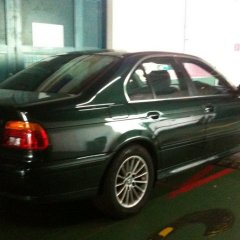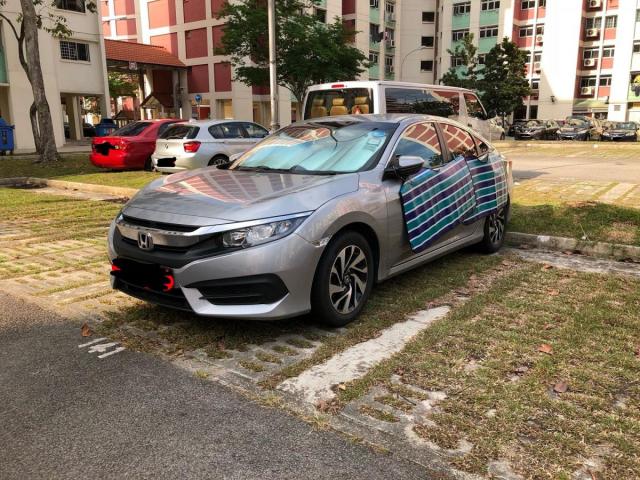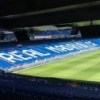Search the Community
Showing results for tags 'systems'.
-
A question on current state of stop-start systems. How do they work? Am I correct to assume that when the engine is turned off by the system during say a traffic light stop, the ecu is smart enough to : 1.) Stop the crank in such a position that one (assume 4 cyl engine) cylinder is at the end of the compression stroke, start of combustion stroke. When engine needs to start; 2.) For port injected, the air-fuel mixture is in there, ignite spark plug for that cylinder, engine turns over. 2a.) For DI, inject fuel, ignite spark plug, engine turns over. The starter motor is not required right? No traditional cranking, just use a spark to set it off?
- 450 replies
-
- i dowan tag
- dowan tag
- (and 7 more)
-

AEB systems halve rear-end accidents, study shows
inlinesix posted a topic in General Car Discussion
https://www.iihs.org/iihs/news/desktopnews/gm-front-crash-prevention-systems-cut-police-reported-crashes -
- 11 replies
-
- 2
-

-
- paint
- protection
-
(and 2 more)
Tagged with:
-
legal hackers invited to try hacking into MINDEF's system to expose vulnerabilities... Mindef invites hackers to test public-facing systems for vulnerabilities http://www.todayonline.com/singapore/mindef-hire-hackers-test-public-facing-systems-vulnerabilities
-
http://www.straitstimes.com/breaking-news/singapore/story/three-pilot-sites-be-implemented-mechanised-parking-systems-2015-20131 Bukit Panjang, Yishun and Changi Village to start rolling out mechanised parking system in year 2015. What are your views. Good or bad ??
- 111 replies
-
- Mechanised
- parking
- (and 5 more)
-
Guys, any brake system to recommend for SUV?
- 8 replies
-
- Recommendation
- brake
-
(and 1 more)
Tagged with:
-
http://www.straitstimes.com/GeneralElectio...l?videoid=62512 5.04 She vows to make them all better. If we vote for her, we will die faster. Her speech full of WAYANG.
-
with all the hoo ha about after market brake systems, i think one wont really know until he tries it himself... i am about to change to VTTR 4 pot, plus enlarged disc rotor 303mm and steel braided hoses... anyone installed before any feedback? or any brands to advoid? a million thanks...
-
Hi All, just thinking,is it the fault of our education system that create so called ah bengs? previously in the 80s and 90s,teacher has the right to cane and impose punishment to students. I remember the days when there are public canings in front of the school assembly. Now the schools imposed the so called " LOVE" teaching. No more becoming scolding the students No more public caning No more standing outside the door Thus students becoming more arrogant,disregarding of discipline and law. So sad
-
(May 13 & 14, 2010) Researchers from the University of Washington and the University of California, San Diego, plan to present a paper in which they describe how computer programs used in automobiles can be manipulated by hackers to take control of braking and other critical systems in cars. The researchers created a tool called CarShark that "can sniff and inject packets on the" Controller Area Network (CAN) system, the diagnostic tool used for all US cars built in 2008 and later. The cyber attackers would need access to a standard diagnostic computer port in the targeted car. In a demonstration last year, the researchers connected a laptop to the targeted car and controlled that car's computer system wirelessly with another laptop in a car close by. The researchers are not trying to scare people, but to drive home the point to automobile manufacturers that they must bake security into the computer systems that accompany new cars. The paper is scheduled to be presented at the IEEE Symposium on Security and Privacy on Wednesday, May 19. http://www.nytimes.com/2010/05/14/science/14hack.html http://www.theregister.co.uk/2010/05/14/car_security_risks/ http://www.pcworld.com/businesscenter/arti...e_and_more.html http://news.cnet.com/8301-27080_3-20005047...tag=mncol;title
-
Bros need your expert advice on small warehouse security system ADT or Chubb is having a monitoring system enough that is if there is an intruder, the system will alert the security firm is there is a real need for video recording thanks in advice 1st time installing this kind of system
-
As we all know.... GPS systems are quite popular now adays.... I'm think of getting one myself..... Therefore i would like to find out how many of us here have a GPS installed in our ride..... How much are we willing to pay for a GPS? Does different brands out there makes a difference?
-
Below extracted from: http://www.udrive.com.sg/?intCategoryID=4&intPostID=42 For info only! *If anyone does attend - please post feedback - I can't attend as I would not be in Singapore then. GPS & CAR AUDIO SYSTEMS - LEARN FROM THE EXPERTS! -------------------------------------------------------------------------------- Discover how you can enhance your driving experience with the latest in-car mobile technologies. Experts will share tips on navigational devices such as Global Positioning Systems (GPS), in-car mobile multimedia systems and car audio systems and how these devices can help you with your daily driving needs. What
-
Good Read for ICE Newbies... [/size] ---------------------------------------------------------------------------------------------------------------------------------------------- Understanding Car Audio Systems Part One of a Five-Part Series By Scott Memmer In the last decade or so, automakers have placed increasing importance on in-car entertainment systems. The core of these technologies has always been the audio system -- the noisemaker, if you will. What appeared in our dashboards more than 50 years ago as a tube radio the size of a breadbox now rivals the technical complexity of a 767. This series is not written for aficionados, but for the average consumer who wants to gain a working knowledge of the basics of car audio design. By the end, we trust you'll have a better understanding of this technology. What are the basics of car audio systems? How does each of the separate components operate? In the series to follow, we'll address these questions in a user-friendly and approachable format. One note before we get started. This series will cover only original equipment manufacturer's (OEM) systems, the ones that come in your car from the factory. Unfortunately, in our limited space for this column, we're unable to deal with the vastness of the car audio aftermarket, which changes every day. Perhaps in future Tech Center articles we'll delve into this area. The good news is, most of the design concepts we're discussing here apply all the way up the line to really loud and pricey systems. A car audio system is composed of four different groups of components. These are: head units, amplifiers, speakers, and auxiliary input devices (such as a CD changer or a graphic equalizer). Let's take a look at each. The Head Unit This is the heart and soul of your system. Without this component, your car audio system can't and won't work. The head unit, or, more simply, the radio, is the central processing device in the system. Consider the way your mind works. Let's say you want to shout at somebody. Your brain tells your vocals chords to raise to a certain volume level. The words form in your mind, your mouth opens, and out comes a shout. In a similar fashion, the head unit controls all the functions in your car audio system. Music too loud? Turn down the volume. Too soft? Turn it up. Want more bass? Add bass input. All changes and controls come through the head unit. If you could see behind the radio in your dash, you'd find a dozen or so wires going off in all different directions to other systems in the car. These are like the nerves in your body, transmitting signals to and from the various components. In addition to volume, bass, etc., the head unit may contain other systems within its casing. These include: tuner, cassette, equalizer, CD or amplifier. Some of these words look familiar? That's because we mentioned them above. You see, in a home music system, where you have much more room, many stereo setups will include a separate box for each one of these components -- CD, cassette, etc. You may have a home system like that yourself. In a car, with its space limitations, these components are often crammed into one box -- the head unit. This depends upon a number of factors, such as heat, space, cosmetic design and other concerns, and every car is different. The Amplifier All car audio systems have an amplifier, even if it's a small one (and based upon the factory systems we've been listening to lately, a lot of them are really dinky). Occasionally the amplifier will be attached to the rear of the head unit; however, in most systems it is hidden elsewhere in the car to better dissipate heat. Signal amplification is actually a two-stage process, handled by two separate components. These are the preamplifier and the power amplifier. The preamplifier (preamp, for short) is like that little voice whispering in your ear not to eat ice cream at midnight. It's a very tiny signal coming directly from the radio (in fact, the preamp resides inside the head unit). Whether it's reproducing a cassette signal, a CD signal, or an FM broadcast, the preamp puts out a signal inaudible to the human ear. This is where the power amplifier takes over. It's the power amp's job to take the signal from the preamp and boost it into the audible range. We'll cover this in more depth in our Amplifier column in this series. Again, because of heat, most amplifiers are located away from the head unit. The Speakers The speakers take the boosted signal from the power amp and deliver it to your ears. The way loudspeakers work is a fascinating process and will be dealt with at length in our Speaker column in this series. Essentially, loudspeakers transform electrical energy (the amplified signal) into mechanical energy (the motion of the speaker cone). For now, know that all sound is vibration. When you snap your fingers, this action sets off a chain of frequencies in the air that eventually vibrate the membranes in your eardrums. You hear: "Snap!" Sound energy is measured in wavelengths, known as hertz, and goes from 20 to 20,000 cycles. A cycle is the distance from the top of one wavelength to the top of the next. Traditional loudspeaker design calls for three components to reproduce sound energy: woofers, tweeters and midrange drivers. As the name implies, the woofer reproduces the lower frequencies, such as a large dog barking. The tweeter, also aptly named, replicates the higher register -- a bird singing. The midrange handles the frequencies in between. Car audio manufacturers use various assortments of these drivers to achieve the sound they want. We'll go into this at length in a future installment. Auxiliary Input Devices Components such as CD changers and equalizers, not to mention cell phones, navigation systems, MP3 players and many of the newer technologies, interface with the head unit for amplification and signal processing. We'll delve into this area in our final installment. We hope this helps you gather a basic understanding of car audio technology. Look for an in-depth view inside the head unit in our next column. ---------------------------------------------------------------------------------------------------------------------------------------------- Understanding Car Audio Systems: The Head Unit Part Two of a Five-Part Series By Scott Memmer http://www.edmunds.com/ownership/techcenter/articles/44842/article.html Understanding Car Audio Systems: The Amplifier Part Three of a Five-Part Series By Scott Memmer http://www.edmunds.com/ownership/techcenter/articles/44841/article.html Understanding Car Audio Systems: The Speaker Part Four of a Five-Part Series By Scott Memmer http://www.edmunds.com/ownership/techcenter/articles/44843/article.html Understanding Car Audio Systems: What to Buy, What to Avoid and What to Add Part Five of a Five-Part Series By Scott Memmer http://www.edmunds.com/ownership/audio/articles/44900/article.html
-
- Understanding
- Your
-
(and 2 more)
Tagged with:
-
Stamford Tyres just appointed as Singapore distributor of Project
-
What do you think is this: http://www.powersystem.fr/UK/index.php Looks like an ECU intercept box. EUR380 before shipping.
-
Hi, Any brothers here tried their in-car-navigation cum TV/Radio/CD player products? Am looking at AUF 6800 or AUF 7000 but the price is about $3000. There may be other hidden cost to activate the navigation device some more... Hope you can provide feedback on whether the price is worth it. http://www.dauf.com/
- 3 replies
-
- DAUF
- Navigation
-
(and 1 more)
Tagged with:
-
Remember there were guys in van drive up and apporach you with cheap home theatre systems years ago. These guys are back in Upper Serangoon (maybe Hougang area as well)looking for victims. I have been appporach recently but have just politely rejected them. Please beware of these con and I should have reported to the police. Anyway to all out there please do not fall into the trap. Beware.
-
hi guys, just to raise the alarm here.... the stupid van that was driving, trying to 'sell' their home entertainment systems, is now appearing in HDB MSCP! looks like they are 'expanding' their net to the heartlands areas now.... i was parking my car at my HDB MSCP, secs later, a van enter the MSCP, driving slowly. when the driver saw me standing by my car, taking my stuff out, asked: "bro, want some home entertainment system. Not selling. dun worry...." immediately i gave him a stern look and shook my hand off him. LL, he drove off. and the van went to the upper levels of the MSCP, searching for their next victim. plate no. GV 47*9. its a Mercs van. got 2 fellas inside..... this time, these 2 fellas seem to be wearing some kind of polo-T uniform! Wow, now they come out with company polo-t uniform ar? want to look more authentic! same polo-t design and same baseball cap.... like DHL or UPS guys! so beware of them!! this is my forth encounter with them already.....! i forgot to add.... i stay in Toa Payoh estate.....
- 25 replies
-
- Home
- Entertainment
-
(and 3 more)
Tagged with:
-
Any one here heard of the above mentioned b4? More like any one installed? The guy installing is from LNH trading. Appreciate comments for anyone who has installed.
-
Bros, I just installed Simota Air Intake System...Any comments on this brand?? Will put up the photo soon for u guys to see....I personally find it quite cool...
-
Anyone here installed the TTE exhausts ?? (from trd.com.sg) Is it any good compared to other exhaust systems that can be used to on toyotas? Does it really sound as sweet as the ad on the website? I need your feed back. Thanx man
-
I think locally few actually have done any objective review on Paint Protective Systems. For those consider ToughSeal, AutoGlym and Ultrashield, there are a good details at: http://www.clean-image.co.uk/paintsealant/index.htm Also, if you want to see how they fair, click the SUMMARY & COMPARISON OF THESE PRODUCTS at the above site. Seems to me UltraShiled is currently providing the best value for money in Singapore if you look at its prices in UK. It might be a good offer for 5-6 hours thorough treatment. Others like Toughseal, Glare and 3mendouz seem alittle costly. UltraShine package gives 18-month shining protection with 5 maintenance at less than mostly $500. Maybe worth a look if tired of frequent waxing and thinking of paint protection treatment. New car got another 10% discount. Any comments? ULTRASHINE PAINT PROTECTION TREATMENT (18 months warranty but last up to 5 years) Small Car $250 Medium Car $280 Large Car, Compact MPV $320 Luxury Car, SUV & MPV $360 ($30 surcharge apply for black cars) ULTRACARE PAINT PROTECTION PACKAGE Include first time UltraShine Paint Protection Treatment and 5 maintenance to be ultilized in 18 months. Small Car $388 Medium Car $438 Large Car, Compact MPV $498 Luxury Car, SUV & MPV $588 ($30 surcharge apply for black cars)
-
OK You all have been hearing about radiator flush and all that stuff. Now for some hardcore DIY stuff. There are many ways to clean out your coolant system. One of the ways is to use detergent. Yes, detergent. Many USA DIYers have sweared by using detergents. I will list the pros and cons of the most popularly used. Laundry detergent Sparkling clean. Cheap as every home has some. Dissolve in water first then replace it into your coolant system and run the engine for a short while. Drain. Flush with water then fill with your favorite coolant/antifreeze mix. Low suds formula usually better as this prevents oversudsing. Oversudsing will make too much bubbles and reduced the washing. Dishwasher detergent Please note this is dishwasher detergent not Mama Lemon. So look for brands like Cascade. Very low sudsing. Expensive. Drano/Drainex Damn aggressive. Super clean. Might spoil the whole system if radiator is aluminium. Acid Super clean wash. Hydrochloric acid best but corrosive. Cannot use for long. Vinegar is milder but if you can stand the smell. In all these cases, you have to remove the thermostat to initiate the flush procedure.











